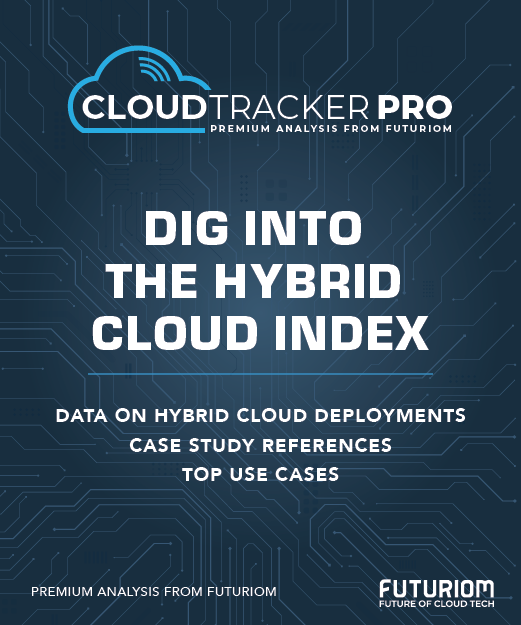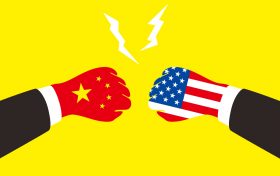MWC 2025: It's a Wrap

Artificial intelligence was the central theme of this year’s Mobile World Congress event in Barcelona, Spain. And for those of us focused on enterprise, cloud, and telco networking, there was plenty of information to digest. While it’s impossible to cover everything, a few highlights stood out at the show (which was attended by over 100,000). Below is a thumbnail summary, along with some photos from the event.
Nokia Points to 5G Success, Talks Up AI
Forget talk of telco industry disappointment. At a pre-show event sponsored by Nokia, the subject was success. “The markets are coming back,” stated Nokia’s CEO Pekka Lundmark, who is set to retire later this month. “We had 9% growth in Q4.” Regarding 5G, Lundmark pointed to Nokia’s deployment of 120 standalone core networks across the world. And he said, “It is still a fairly early stage.”
Lundmark thinks the industry will not only further benefit from the deployment of 5G and its synergies with AI but also from cost savings due to AI-based automation. He believes with “agentic AI across the portfolio,” Nokia can recognize $800 million in savings in automation for customers.
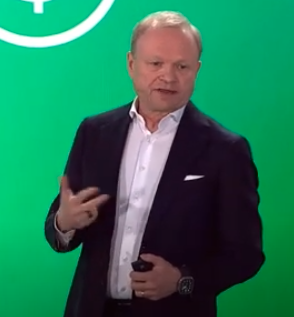
Pekka Lundmark, Nokia CEO, at MWC Nokia event
AI-RAN and More
AI-RAN uses AI to optimize radio-access networks, and the AI-RAN theme ran amok at MWC, with references seemingly everywhere.
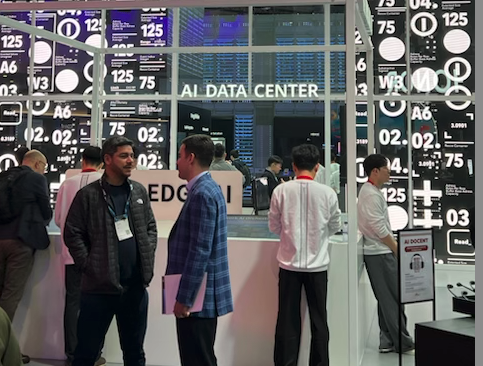
Browsing at MWC 2025. Photo by Scott Raynovich
For those of you not familiar with the technology, AI-RAN refers to telecom-specific applications of AI used to orchestrate and optimize connections in radio access networks.
In this vein, the AI-RAN Alliance industry group announced its first anniversary at the show. The group boasts 75 members in 17 countries, including 43 technology companies, 15 academic institutions, seven service providers, six industry associations, and four labs. Those labs represent collaborations with Keysight Technologies, Northeastern University, Singapore University of Technology and Design (SUTD), and VIAVI Solutions.
What’s interesting about AI-RAN is that it not only includes the traditional telco incumbents in the RAN market, such as Ericsson and Nokia, but also NVIDIA, the AI giant. NVIDIA sees the opportunity to sell telco-grade AI systems to drive RAN optimization.
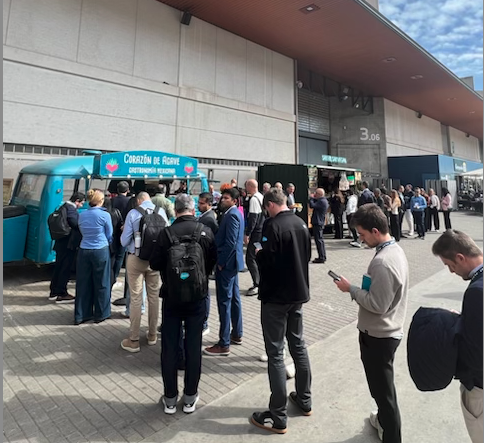
Queuing for the food truck at MWC 2025. Photo by Scott Raynovich
A couple of notable AI-RAN and related telco AI announcements at MWC included the following:
Red Hat and SoftBank Implement AI-RAN. IBM’s Red Hat announced that it’s working with SoftBank’s AITRAS network orchestration and optimization solution that supports both AI and RAN workloads on a single NVIDIA GPU-based computing platform. The Red Hat OpenShift Kubernetes-based platform will enable service provider users of AITRAS to orchestrate and control energy costs, resources, and workloads on their networks.
SoftBank Implements AI-RAN Functions on NVIDIA chips. AITRAS also deploys AI-RAN functions on NVIDIA chips. Specifically, SoftBank claims that with Fujitsu it completed the implementation of central unit functions on NVIDIA’s Grace CPU Superchip and implemented distributed unit functions on a single GH200 Grace Hopper Superchip. And SoftBank’s recent test of AI-RAN, jointly conducted with NVIDIA and Fujitsu, showed that AI-RAN-enhanced channel estimation accuracy for signals received at base stations—known as uplink channel interpolation, with the operator confirming uplink user throughput—improved by about 20% on smartphones.
Arrcus Announces TGAX. Hyperscale multicloud networking software vendor Arrcus unveiled a Telco Grade AI Ethernet Switch (TGAX), which combined NVIDIA’s Spectrum-4 Ethernet switch with Arrcus’s ArcOS network operating system, which powers the vendor’s Arrcus ACE networking software stack. The result is a switch that enables telcos to offer VPN and datacenter interconnect services, multicloud networking, and AI-RAN.
Jio Platforms, with AMD, Cisco, and Nokia, Plans Open Telecom AI Platform. India’s Jio Platforms, part of Reliance Industries, is coordinating a group effort to deploy technologies from AMD, Cisco, and Nokia in a Telecom AI Platform. The press release states: “The AI platform will be LLM agnostic and utilize open APIs to optimize its functionality and capabilities. By harnessing agentic AI and leveraging both Large Language Models (LLMs), domain-specific Small Language Models (SLMs), and non-GenAI machine learning techniques, the Telecom AI Platform will enable end-to-end intelligence for network management and operations.” No date for delivery.
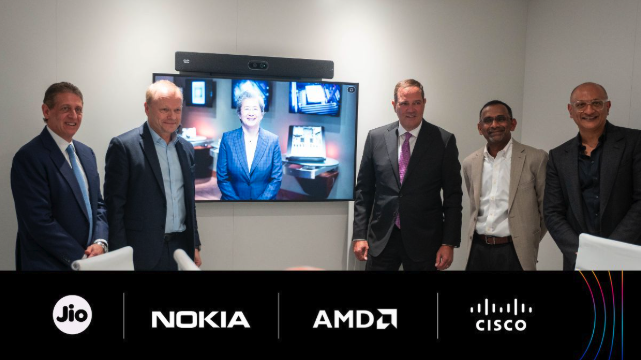
Quite the lineup in support of Jio's Telecom AI Platform
AI Inference and the Edge
As telcos build out edge infrastructure with AI gear, inference, or the adaptation of AI models to specific enterprise applications, represents a potentially lucrative market. At Nokia’s pre-show event, guest Ryuji Wakikawa, head of SoftBank’s Institute of Advanced Technology, said AI inference offers a golden opportunity for telecom providers. “I think datacenter for training is an investment,” said Wakikawa. “More important for operators is inference. Where does the revenue come? We want to capture that revenue. We need technology and that’s AI-RAN.”
In an interview at MWC, Michael Clegg, VP and GM, 5G/Edge with Supermicro, told Futuriom he thinks the AI revolution represents a remarkable opportunity for telcos at the edge of the network, as enterprise demand for inference grows. “A lot of money is going into the training side, but AI becomes more interesting when you do inferencing at scale,” he said. He points out that AI-RAN and inferencing can be fueled by the same infrastructure, including GPUs and servers at the edge programmed for whatever task is at hand.

Michael Clegg, VP and GM, 5G/Edge, Supermicro. Photo by Scott Raynovich
And fortunately for the industry, Clegg said that AI is coming online just as the true 5G rollout, characterized by 5G standalone architectures, is reaching critical mass in earnest. “5G with non-standalone confused the market,” Clegg said. “It was really 4G+. Real 5G is 5G standalone. So in a way, 5G is only coming to market now. The benefits are starting to show up. It’s started with 5G SA.”
Futuriom Take: MWC 2025 overwhelmed us with AI as it applies to the telecom sector. Expect to see activity in this market this year as inference demand swells.




